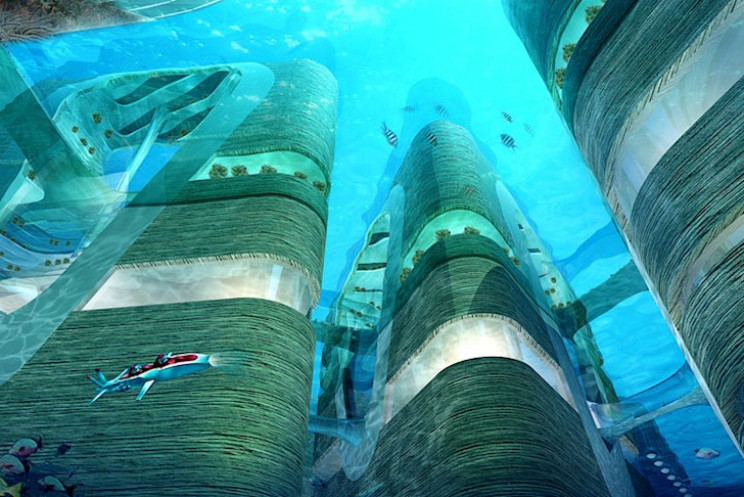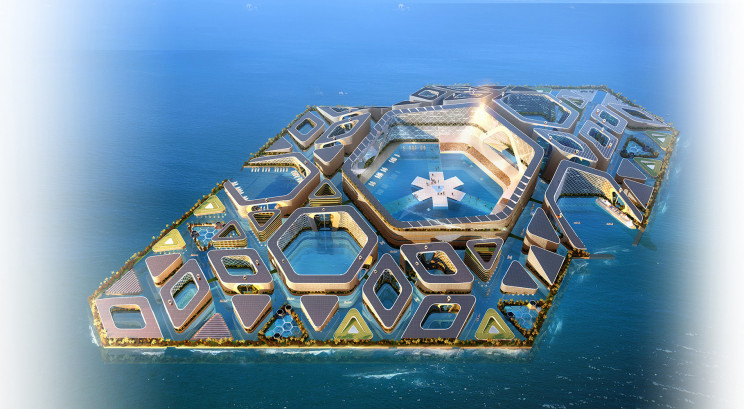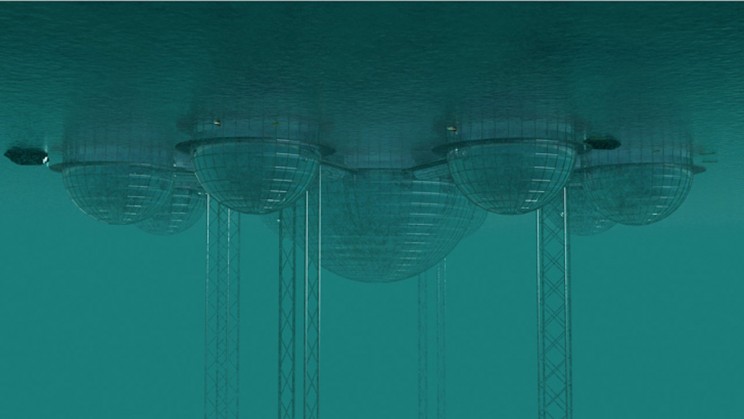What Do You Need to Know About Chandelier
The idea of humans living underwater may not be as crazy as you think. An idea once reserved for video games or scientific discipline fiction, underwater cities may be a viable solution for humanity in the distant future.
Would you pack up your bags, clear out your flat, and move to an underwater paradise? Perchance yous might even dream of living like the fictional city of Atlantis. If i t makes sense to get out and colonize Mars, the ocean is but as livable and is far closer to domicile. As you lot probably already know, the earth is 71% h2o. This could be prime real estate for future generations.
Living underwater does pose its fair share of challenges, like common cold temperatures, immense pressure, and a lack of oxygen. Non to mention, long-term underwater living can wreak havoc on your body.
Yet, at that place are promising new horizons in the world of the underwater living that could tackle these issues and have yous or your time to come children living comfortably underwater in the coming years.
SEE As well: HOW ENGINEERS Work TO CREATE STRUCTURES UNDERWATER?
1. Underwater cities are not a new thought

Though not equally frequently touted as some forms of space colonization, underwater living has titillated futurists since the beginning of the 20th century. However, it was the iconic body of water explorer Jacques Cousteau who made this idea a reality, bringing it to fruition in the early 1960s.
For the uninitiated, Jacques Yves Cousteau was a French oceanographer, researcher, filmmaker, and undersea explorer, who was largely responsible for igniting the interest of the general public in the ocean, and the eventual possibility of underwater cities.
Cousteau was then passionate about understanding and exploring the world'southward oceans that he created the famous Conshelf series of underwater habitats.

The structures allowed 'oceanauts' to live underwater for days, or even weeks at a time. Each iteration of the shelters (Conshelf I, Ii, III) improved over time, eventually assuasive six oceanauts to alive underwater at a total 328 feet (100 meters) below the surface.
Cousteau's efforts to colonize the ocean laid the foundation for the futurity of underwater cities. In fact, Conshelf sparked a craze, and in the late 60s and early 70s, more than threescore underwater habitats were dotted across the seabeds, with names similar Sealab, Hydrolab, Edalhab, Helgoland, Galathee, Tektite, Aquabulle, Hippocampe.
2. The depth of the colony affects everything

How humans breathe underwater, and the depth of the structure, are correlated, dictating how the construction should be created and the mixture of air humans will demand to breathe in their underwater city.
First and foremost, information technology appears that humans should not build colonies deeper thani,000 anxiety ( 300meters), and ideally at much shallower depths.
This is because the pressure level at these depths would not only require very thick walls merely would as well crave lengthy periods of decompression when returning to the surface.
At these depths, humans need to take extra measures to ensure that in that location is a healthy ratio of oxygen to other gases in the air, as the body requires varying levels of different air components when at force per unit area. Plants and artificial light could maybe be used to supply some oxygen, but depth, nitrogen, or helium would likewise be needed.
three. Food wouldn't exist a problem in our underwater city
The adept news is that living on the bounding main floor could provide humans with ready access to seafood and sea plants.In that location are aquanauts who are currently living underwater, who are able to partially back up themselves via spearfishing, combined with canned and preserved foods.
Even more than so, more traditional meals and even freshwater could be transported through tunnel or hose systems connected to the surface.
4. Living underwater will give usa a better understanding of the bounding main

The idea of living underwater is of item interest to scientists around the world, including marine biologists. Scientists and researchers have better maps of Mars than they do of Globe'south own sea floors. To this engagement, humans have merely explored 3% of the sea.
Living underwater could also assist give scientists a amend understanding of the planet and the development of life on World. Not to mention, there are probable a host of resources still to be discovered on the sea floor.
Experts predict there could be an unquantifiable amount of minerals and metals that could be used to improve humanity and even help with the further construction of underwater cities.
5. At that place are architects already working on underwater city plans

Architects at the Shimizu Corporation have already designed a $26 billion projection to create an underwater metropolis. According to the Tokyo-based company, their project would allow thousands of humans to live very comfortably underwater.

Though most of it is notwithstanding just a concept, the Sea Screw City would sit below sea level off the declension of Tokyo. With its massive turbines, the city would ability itself through the ability of waves, tide, and ocean currents, supporting those who lived on the structure.

The construction would be able to support v,000 people, and would include labs, schools, and beautiful residential areas. The underwater city could become a reality past around 2030.
6. The engineering science already exists… Sort of

Right now, humans accept the ability to create underwater colonies that could support upwards of 100 people. As a biology professor at Stanford University Ian Koblick states, "In that location are no technological hurdles. If you had the coin and the demand, you lot could do it today."
RELATED: UNDERWATER WELDING: ONE OF THE Virtually Dangerous OCCUPATIONS IN THE World
Constructed with steel, glass, and special cement, habitats are more probable to take a modular pattern than the more popular conception of a big, underwater bubble or dome.
Structures could be added or subtracted from the underwater colony to assist fit population needs. Larger underwater colonies are already viable. What keeps them from coming into fruition is a lack of interest, motivation, and funding.
7. It could assist preserve humanity
Hopefully, it won't become to this, only living underwater could assistance to save the human species in the example of a major apocalyptic event. Philip Pauley, founder of the London-based visual communications consultancy Pauley, has designed a self-sustaining habitat that could save50-100 people during a disaster scenario.

1 way to combat the growing threat of war, limited resources, or global warming may come from moving populations underwater.
To the time to come
Would you live in an underwater urban center? You may not get the full Rapture experience yet; however, there are already restaurants and hotels that are popping upwards around the world that allow people to feel express underwater living. It is probably more comfy than living on Mars.
Source: https://interestingengineering.com/7-things-you-should-know-about-the-future-of-underwater-cities
0 Response to "What Do You Need to Know About Chandelier"
Post a Comment